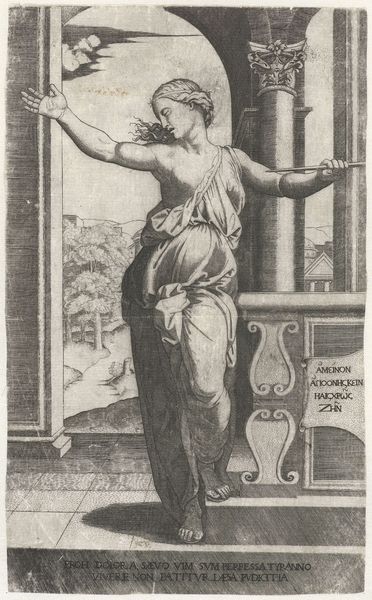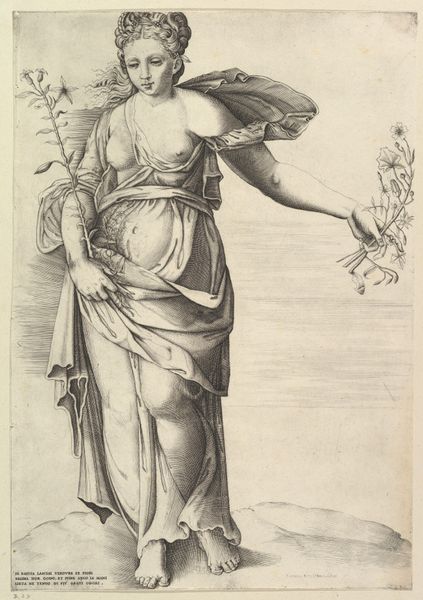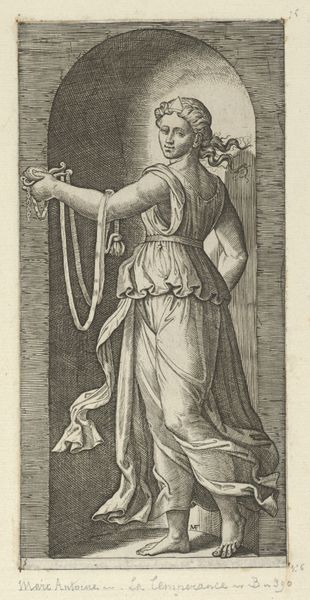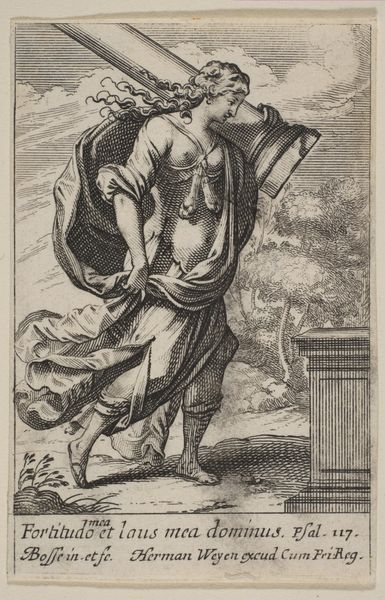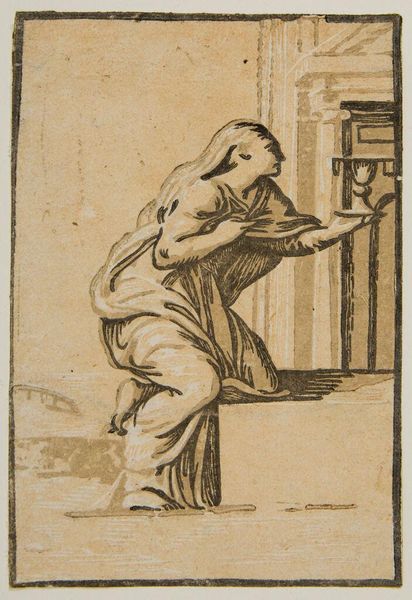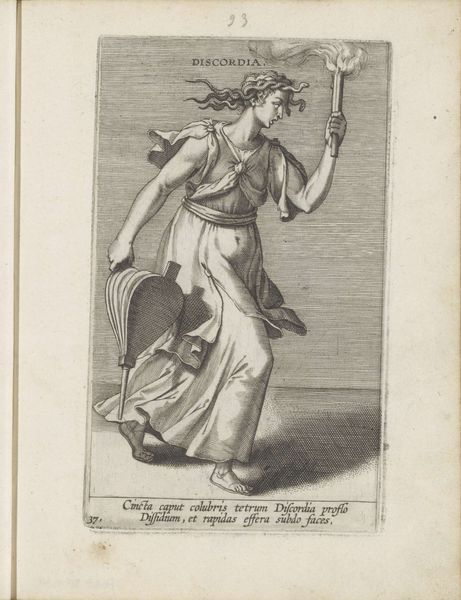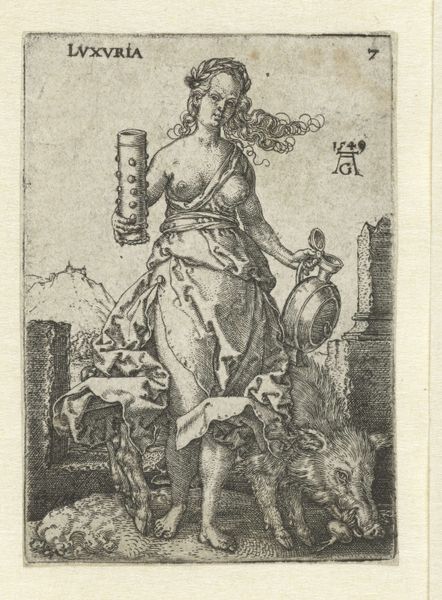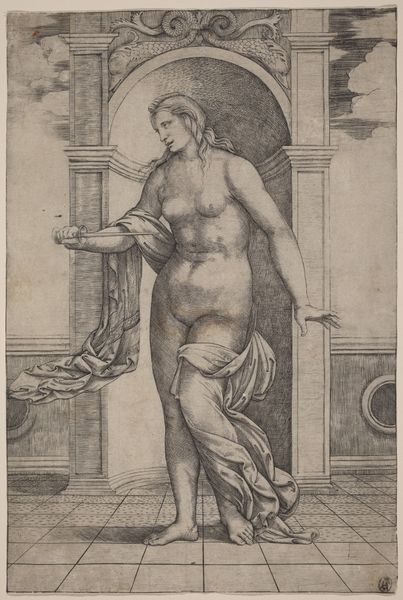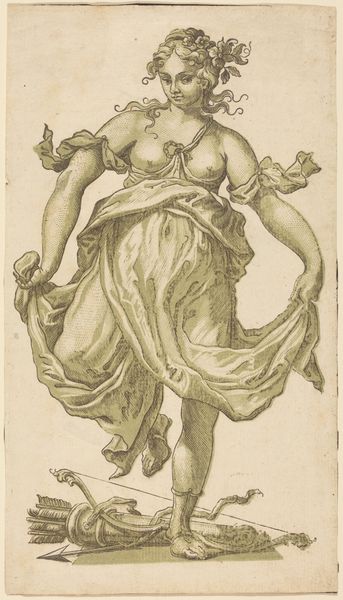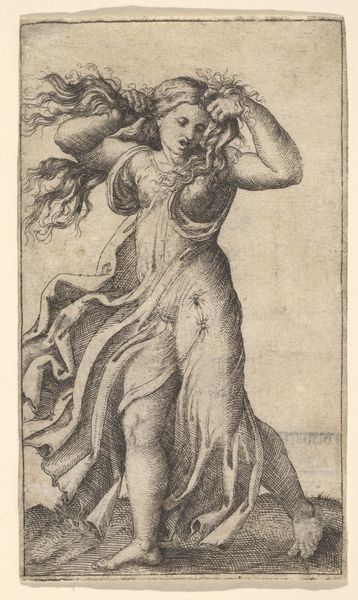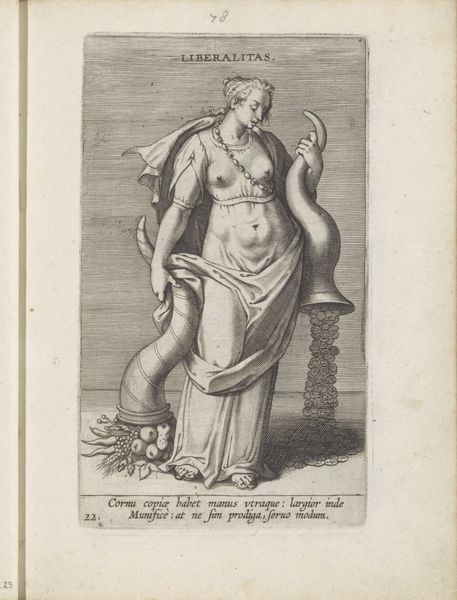
print, intaglio, engraving
# print
#
intaglio
#
mannerism
#
figuration
#
history-painting
#
italian-renaissance
#
nude
#
engraving
Dimensions: height 206 mm, width 133 mm
Copyright: Rijks Museum: Open Domain
Editor: We're looking at Enea Vico's 1541 engraving, "The Suicide of Lucretia," here at the Rijksmuseum. It's quite striking how detailed the lines are for such a small print, almost creating a sense of movement in Lucretia's pose. How do you approach a work like this, focusing on its physical production? Curator: For me, this piece screams of labor and the commodification of classical narratives. The meticulous detail wasn't just for artistic expression; it was about demonstrating the engraver's skill, a valuable asset in a competitive print market. The very act of engraving, a demanding and time-consuming process, transforms Lucretia's story into a tangible object, something to be owned and circulated. Editor: So you're saying the material and process influence our understanding of the subject? Curator: Absolutely! Consider the role of prints in disseminating knowledge during the Renaissance. This image wasn’t just passively admired; it was actively reproduced, distributed, and consumed. This act, this market, helped spread certain idealized images or political commentary, shaping perceptions of women, honor, and power. What details jump out at you, thinking about the means of production? Editor: The inscription "TOMASIVS BARL. EXCVDEBAT" at the bottom. It makes me think about the printing house, the workshop where these images were replicated. Curator: Precisely. The existence of that name acknowledges a whole network of labour involved. We often see art through the lens of individual genius, but the prints remind us that artistic production was very much a collaborative and commercial venture. They also give insight into where these materials would have come from and who was being contracted to fulfill each piece of this creation. Editor: That shifts my understanding quite a bit. It makes me wonder about the accessibility of this piece to a wider audience and who would be engaging with it and how. Curator: Indeed! Analyzing art from a materialist perspective brings attention to the often overlooked economic and social dimensions embedded within even seemingly straightforward historical depictions.
Comments
No comments
Be the first to comment and join the conversation on the ultimate creative platform.

